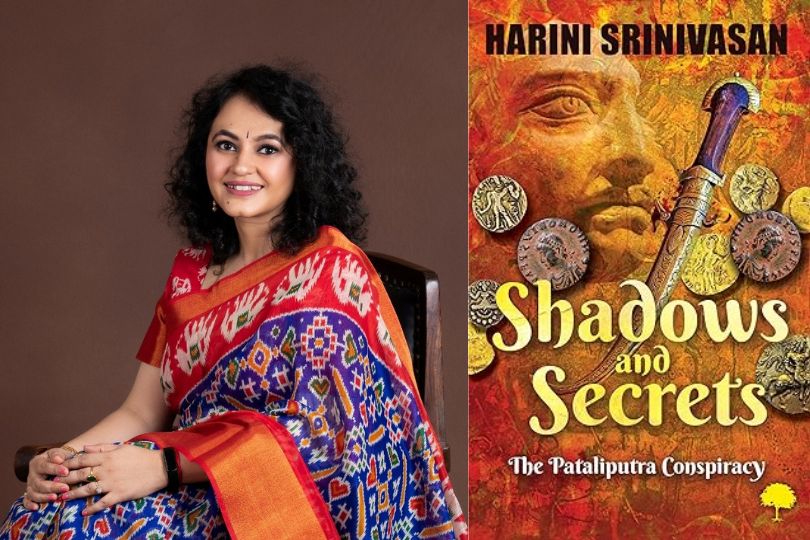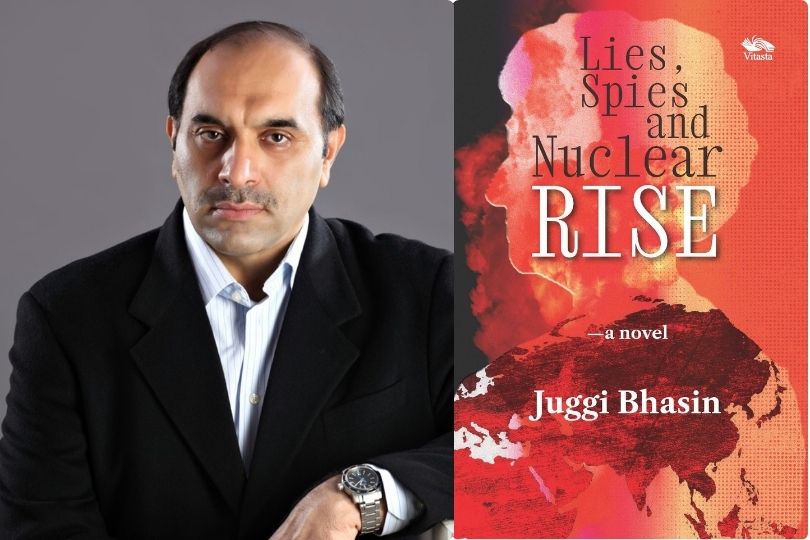Interview with Harini Srinivasan, Author of “Shadows and Secrets ”
Dive into the delicate balance of fact and fiction in Harini Srinivasan's 'Shadows and Secrets' as she discusses historical narratives with Frontlist.on Apr 15, 2024

Frontlist: Historical fiction often requires a delicate balance between factual accuracy and creative license. Can you share any instances where you had to navigate this balance, and how you ultimately decided which liberties to take in service of the story?
Harini: Yes – definitely; the balance between factual accuracy and creative license has been delicately managed. In Shadows and Secrets, a former huge but now extinct religion, Manichaeism is a part of a significant arc. The followers of the religion have been known to have lived in India (somewhere in the east) sometime in the 5th century – before heading to China – which is where the religion ended in the 14th century. I used this as the basis of having some of my characters belong to this religion in Shadows and Secrets. However, the circumstances that they find themselves in and the reason behind their being here are totally fictional. Based on my understanding of the history of religion and also my belief that humans make the same mistakes over and over again, and the underlying themes I wished to explore in this book, I have taken some creative liberty. I won't reveal what exactly that is and leave it at that. However, at no given time has the creative liberty tampered with the historical details per se.
Another example is the creative liberty that I have taken in the case of both The Curse of Anuganga and Shadows and Secrets is in defining the role of Kalidasa.
Frontlist: Could you elaborate on the research process you undertook to accurately depict Kalidasa's multifaceted role in your novel, especially considering his historical reputation as a literary figure? How did you go about exploring potential historical sources or lesser-known aspects of his life to inform his expanded role in the story?
Harini: Kalidasa is a fascinating character – about whom many tales exist in folklore. Not much is known about his life at all. There are many theories based on ancient and medieval texts and a detailed study of his plays as to when he lived. He is known to be the court poet of a King named Vikramaditya – who ruled in Ujjain. The theories have speculated as to who this Vikramaditya could have been. The most popular theory locates King Vikramaditya as King Chandragupta II Vikramaditya of the Gupta Empire. And it is this theory I have used as the basis for Kalidasa's role in The Curse of Anuganga and Shadows and Secrets. My casting him as the Head of the Intelligence Network (unofficial) is purely fictional. Giving him this expanded role was based on several factors: he was well-known, both in his time and for posterity, as a classical dramatist, which meant that he would have had a pulse on what was going on on the ground level. He had access to the higher echelons of the society as well based on his renown and the trust the King had in him and his abilities – both in appointing him as one of the Navaratnas in his court and as well as the tutor for his grandsons (the Vakataka princes). Considering that espionage was very well established in Ancient India, Kalidasa was an ideal candidate for the position of Head of the Intelligence Network then. Since nothing much is known about his life at all, it was easy for me to make him thus. In my story as well, only a few people (close to the King or respectable figures in that society) were aware of his dual role.
Frontlist: What strategies or narrative techniques do you employ to breathe life into historical events and figures, transforming potentially dry or obscure subjects into compelling and immersive storytelling experiences for readers?
Harini: History is not the way we have been taught – a series of dates when such a thing happened. History is nothing but a window into how people have lived in the past. And people, past or present, are breathing, living human beings (even if they have now exited the world stage and have passed on.) When I write, I don't see them as historical figures probably featured in some old book – I view them as humans, with all their follies and foibles, and endow them with such qualities and traits. And people's lives – be it in the past or now, are interesting. Ultimately I am looking to tell an interesting story, albeit one set in the past. What, of course, differentiates a story set in the present time and one in the past is to get the background/ setting right. This is a must in historical fiction. I have done a fair amount of research on the Gupta period – the existing social mores, conditions, and how people's lives progressed. Have used this to set the stage and tell an interesting story. The reader should feel like he/ she is in that era and is witnessing something happening there. Also maintaining the balance with how much history (facts and figures) to insert vs keeping the action moving is key. The pitfall with so much research is that writers often do not realize which aspects of their research they must include and which they should leave out.
Frontlist: Religion and religious practices often play a significant role in historical narratives. How did you approach incorporating religious elements into the story to add depth and complexity to the characters and plot?
Harini: For one, religion forms the crux of Shadows and Secrets and influences both character and plot, adding a layer of complexity. I won't reveal more about how one needs to read the book. During my research, I came across multiple references to an annual Buddhist procession. I found the references fascinating and hence used them to further the plot in both The Curse of Anuganga and Shadows and Secrets.
Frontlist: Your background in content management and editing likely involves meticulous attention to detail. How did this skill set influence your approach to world-building and character development in the novel?
Harini: It helped in the extensive research involved in the plotting of the books – for that required poring over tomes and tomes of material and also in the numerous rewrites. I was dissatisfied with the initial draft (30K words) of Shadows and Secrets – it just wasn't working. I deleted that entire draft and started afresh –this was possible only because of my editing and content management profile.
Frontlist: Can you discuss specific instances in your storytelling where you challenge readers' assumptions about well-known historical figures like Maharaja Chandragupta II Vikramaditya and Mahakavi Kalidasa?
Harini: As mentioned before, making Mahakavi Kalidasa the Head of the unofficial Intelligence Network is really subverting the main assumption about him as being only the great dramatist. As for Maharaja Chandragupta II Vikramaditya, he isn't exactly featured in the book except for being in the periphery.



.jpg)






.jpg)

.jpg)
.jpg)

.jpg)

.jpg)

.jpg)










Sorry! No comment found for this post.